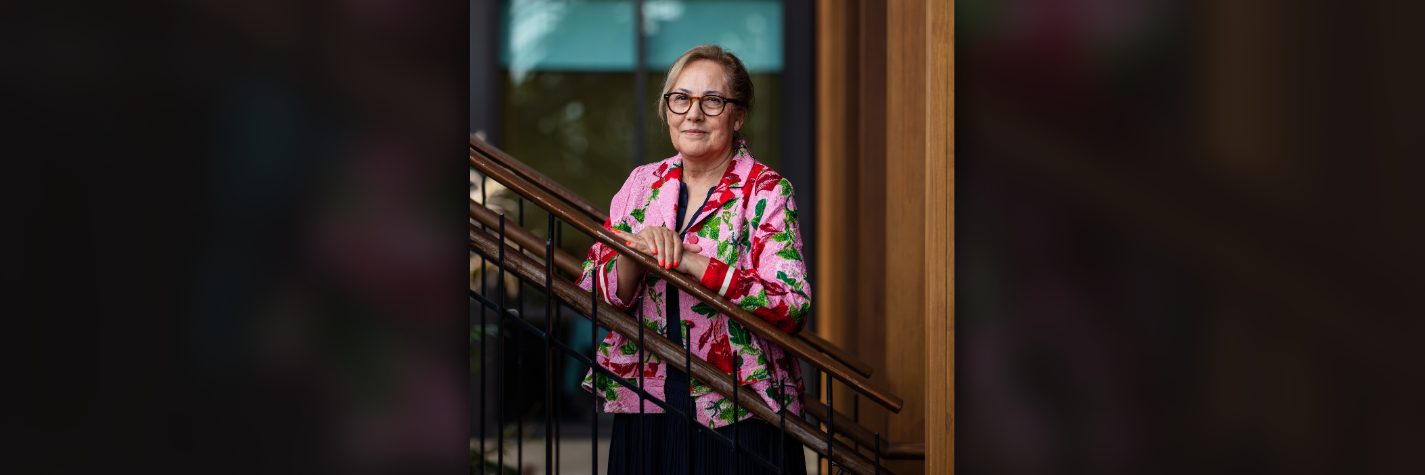
Linda Tuhiwai Smith (Ngāti Awa, Ngāti Porou) is a distinguished Professor at Te Whare Wānanga o Awanuiārangi. She is a leading scholar and researcher in indigenous studies, indigenous education and kaupapa Māori research and has written many publications. She was made a Companion of the New Zealand Order of Merit in 2013 for her services to Māori and education.
Congratulations on the launch of the Whatumanawa Collection. This series of children’s pukapuka explores how to deal with a number of heavy kaupapa, in a way that we haven’t seen before, especially from a Māori perspective. What was the driving force behind creating this collection?
Over the last few years I have been involved with colleagues and Māori providers in a series of research projects related to historic inter-generational trauma and, in particular, examining Kaupapa Māori approaches to addressing and healing from trauma. I felt there was a need to talk to tamariki directly because if adults and parents don’t, (because they are often dealing with their own issues or they don’t know how to do it) then tamariki take on the trauma and it takes over another generation. Also as someone who trained as a counsellor (in my previous career as a teacher and counsellor) I know tamariki and whānau are more capable than experts give them credit for and their cultural values can absolutely help them to find the pathway of communication and understanding. I wanted to show that we can have our own healing stories and that our people are capable of designing healing strategies that work for us. Sometimes we just need someone else in the whānau to pick us up and love us back to healing. Other times we need an imaginative Kura community, a kapa haka tutor, a cousin.
All of these pukapuka feature some sort of trauma. Did you apply specific tikanga or kawa to your writing process?
The stories often came to me when I was driving back and forth between Kirikiriroa where I was working and Whanganui where I lived. I often cried while I was driving as I imagined the story and visualised the characters. My tikanga was to share with my colleagues what I was writing. I asked my Māori psychology colleagues for feedback. In one way the research process when researching with trauma needs ways for the researchers to debrief, reflect and contemplate what we are listening to and dealing with. I find creative writing one way that helped me reflect. I also didn’t just want to write one more trauma story but a story that shows healing, strength, survivance
This is the first time we’ve seen children’s pukapuka from you. How different was the process of writing them compared to your academic writing?
It has been extremely challenging for me to write for children although I have always read to children as a teacher, parent and grandparent. It’s a different style from academic writing but I know tamariki can and do cope with complex issues, ideas and even language, if adults explain. I was also confident that children who may not yet have a vocabulary for what they are experiencing find a vocabulary, a way of communicating their anguish, that can be difficult for adults to interpret and make sense of. It can for example, manifest in silence, nightmares, behavioural issues, not eating, acting out, over eating etc
In the back of these pukapuka are guiding questions and topics, to help pakeke explore further kōrero with their tamariki, around the issues such as family violence, suicide, grief and homelessnes. Although these pukapuka are children’s books, to what extent are they also resources for adults?
I know of adults who would find these books helpful to them in terms of explaining their own childhood experiences or their own actions upon/towards tamariki. I hope adults will take a child through these stories in a safe environment. However I also know that many tamariki may not get support and a chance experience of reading something which makes sense to their experiences will also be helpful. The risk of course is some tamariki might find the stories themselves traumatizing but literature has a power to help widen the world of possibility for readers and children in particular. Adults simply need to help them by communicating with them, talking about issues and giving them a sense of security.
What do you think your tīpuna would think of these books? What would their reactions be?
Our tīpuna knew trauma. My grandmothers both raised whangai mokopuna because of issues that tamaiti may have been experiencing. My father was raised by his grandmother and then became a whāngai. They love mokopuna because they can see in them the hope of a better life, all that potential, and raising mokopuna is a Kaupapa Māori strategy for addressing trauma.
The pukapuka are illustrated beautifully by Isabel Joy Te-Aho White, they seem to capture modern-day Māori life as well as the poignant tone of the content. To what extent was the illustration a collaboration to bring these stories to life?
It has been an interesting process to work with Isobel and I am really happy with the illustrations. Some of her illustrations nailed the context and characters better than I imagined. Others I had to think through the scene in order to give better context for her, e.g. the tangi scene or a scene at an urupa. Illustrations help carry the story and I think Isobel’s illustrations were very sensitive, empathetic and conveyed emotions extremely well. I am really pleased she was the illustrator for all the books as they hold a style as a collection. I was concerned that perhaps the subject matter might be a bit too heavy for illustrators.
I wanted to make sure we weren’t just creating stereotype images of “traumatized Māori people”. I wanted the people to look like who we would see in the community, at school, in town etc. I also wanted to show different examples of loving tāne, funky maybe, all moko-ed up but still a good papa or uncle or teacher. And I had a thing about showing Nannies as bent over kuia wearing a baggy dress and carrying a kete! I don’t know any Nanny like that. And, I wanted all the professional people in the stories to be Māori as there are now Māori in all those roles. So I didn’t want it to look like Pākehā professionals are the ones we go to to be saved.
What books, or other art forms, influenced you while writing this book?
I initially imagined a couple of stories as comics or graphic novels. I asked my mokopuna who was 11 at the time and he just said he doesn’t read books Lol! But I remember he loved us reading books to him from when he was a little baby so that then lead me to picture books.
What are your dreams or aspirations for this collection of books?
That they can support our tamariki and their whānau to believe in themselves and our tikanga as a source of healing and inspiration. I want our tāne to believe their role as fathers and uncles and koro’s is really important to ensuring our tamariki grow up loved and secure in their identity. I want our whānau, neighbours, teachers and communities to know they can help in simple ways. And I want our whānau to believe in their own creativity to find the right pathway for the tamaiti who need their support.
Which book by a Māori author have you read lately that you loved and what did you love about it?
Kurangaituku by Whiti Hereake. One of my favourite characters in the stories my father often told my sister and I in the car to keep us from fighting. I loved Whiti’s reimagining and bringing to life Kurangaituku.
What advice do you have for emerging Māori writers?
Write, share, write. Ask for and take on feedback. There is no shame in having multiple drafts.
Photo credit: Te Awanuiārangi




